Introduction
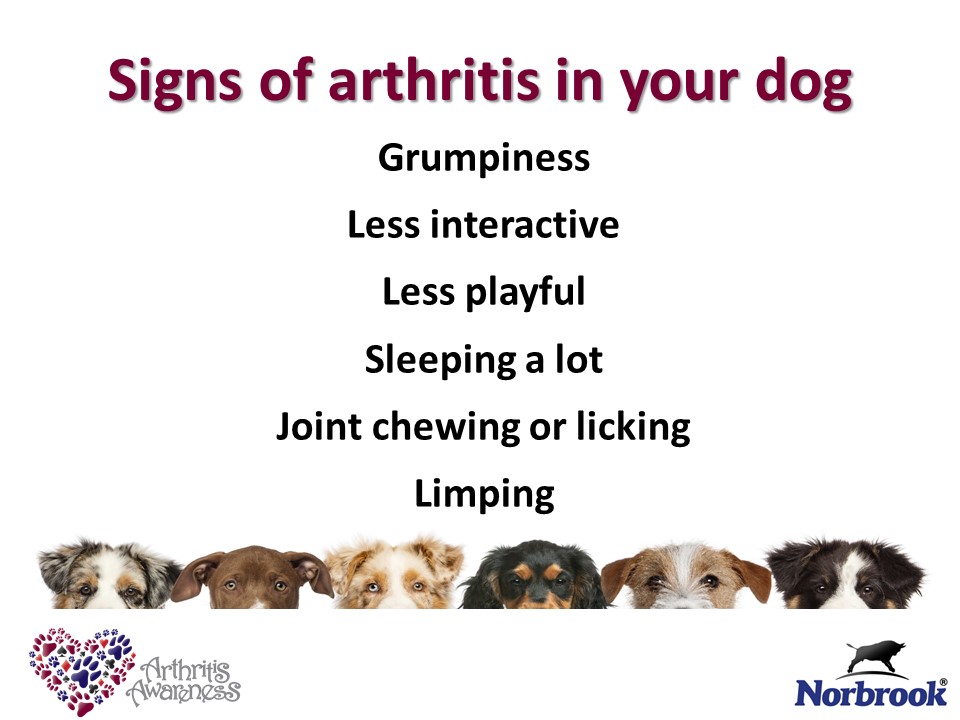
Canine arthritis is a common and debilitating condition that affects the joints of dogs. It is characterized by inflammation and degeneration of the joint tissues, leading to pain, stiffness, and reduced mobility. Arthritis can occur in any breed or age of dog, although it is more commonly seen in older dogs due to wear and tear on the joints over time.
The prevalence of canine arthritis is significant, with studies estimating that around 20% of dogs will develop arthritis in their lifetime. This makes it a major health concern for pet owners and veterinarians alike.
Recognizing the signs and symptoms of canine arthritis is crucial for early detection and effective management. Limping, difficulty in walking, joint stiffness, and swelling are some common indicators that a dog may be suffering from arthritis. Diagnosing the condition involves physical examination, history taking, and diagnostic imaging methods like X-rays or ultrasound.
Proper management approaches are essential to alleviate pain and improve quality of life for dogs with arthritis. This includes pain management options such as medications and alternative therapies like acupuncture or physical therapy. Additionally, lifestyle modifications like orthopedic beds or assistive devices can provide comfort and support for arthritic dogs.
Nutritional supplements can also play a role in managing canine arthritis. Glucosamine and chondroitin have anti-inflammatory properties that can help reduce joint pain. Omega-3 fatty acids are beneficial for joint health as well.
In conclusion, canine arthritis is a prevalent condition that requires comprehensive management to improve the well-being of affected dogs. By recognizing the signs early on and implementing a holistic approach to treatment, owners can help their furry companions live comfortable lives despite this chronic condition.
What is canine arthritis?

Canine arthritis, also known as osteoarthritis or degenerative joint disease, is a common and painful condition that affects the joints of dogs. It is characterized by the progressive deterioration of the cartilage that cushions the joints, leading to inflammation and discomfort. Arthritis can affect any joint in the body, including those in the knees, hips, elbows, shoulders, and spine.
This condition typically develops as a result of wear and tear on the joints over time or due to injury or genetic factors. As the cartilage breaks down, the bones may rub against each other, causing pain, stiffness, and limited mobility.
Canine arthritis is most commonly found in older dogs but can also affect younger animals, especially if they have experienced trauma or have certain predisposing factors. It is important for dog owners to be aware of the signs and symptoms of arthritis so that early intervention and management strategies can be implemented to improve their pet's quality of life.
The prevalence of canine arthritis

Canine arthritis is a common condition that affects a significant number of dogs worldwide. According to veterinary studies, it is estimated that 20% of adult dogs suffer from some form of arthritis. This prevalence increases with age, with approximately 60% of dogs over the age of seven being diagnosed with the condition. Canine arthritis can affect any breed or size of dog, although larger breeds and those prone to joint issues are more susceptible. Additionally, obesity has been identified as a contributing factor to the development and progression of arthritis in dogs. Understanding the prevalence of this condition highlights the need for effective management strategies and early intervention to improve the quality of life for our furry friends.
Signs and Symptoms of Canine Arthritis

Canine arthritis is a degenerative joint disease that affects many dogs as they age. It is important for pet owners to be aware of the signs and symptoms, as early detection can lead to better management and improved quality of life for their furry companions.
Limping and difficulty in walking are common signs of canine arthritis. Dogs may also exhibit stiffness and swelling in the joints, causing them to move less frequently or with hesitation. Some dogs may become less active or unwilling to play, while others may show signs of discomfort when touched in certain areas.
Additionally, changes in behavior such as irritability or aggression, reluctance to climb stairs or jump onto furniture, and decreased appetite can also be indicators of arthritis.
If you notice any of these signs or symptoms in your dog, it is important to consult with a veterinarian for proper diagnosis and treatment options.
Limping and difficulty in walking

Limping and difficulty in walking are key signs that your dog may be suffering from canine arthritis. Arthritis can cause pain and inflammation in the joints, making it challenging for your furry friend to move around comfortably. You may notice that your dog favors one limb or has trouble putting weight on a particular joint. They may also exhibit a stiff gait or struggle to walk up or down stairs.
It's important to pay attention to these signs as they can be indicative of joint deterioration or damage. If you notice limping or difficulty in walking, it is crucial to seek veterinary assistance. Your veterinarian can assess your dog's condition and recommend appropriate management strategies to alleviate their discomfort and improve their mobility.
By addressing these symptoms early on, you can help ensure a better quality of life for your four-legged companion and minimize the progression of canine arthritis.
Joint stiffness and swelling
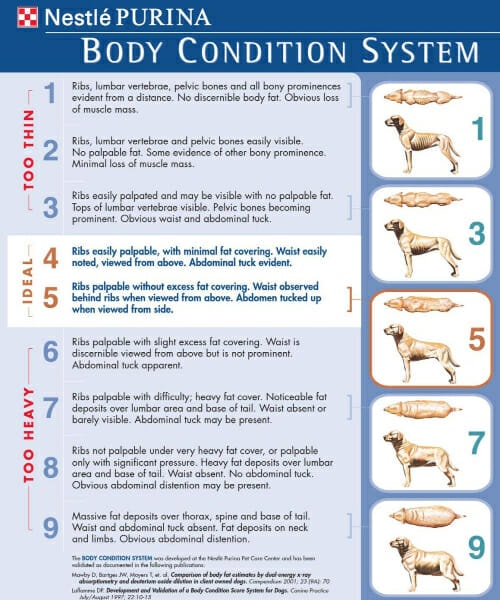
Joint stiffness and swelling are common signs of canine arthritis. Dogs with arthritis may experience difficulty in moving their joints and may show signs of stiffness, especially after periods of rest. Joints affected by arthritis often become swollen and inflamed, causing discomfort and limited mobility for the dog.
The stiffness experienced by dogs with arthritis typically worsens with time, making it harder for them to perform daily activities such as getting up from lying down or climbing stairs. Swelling occurs due to the inflammation within the joint, causing pain and discomfort for the dog.
It is important to note that joint stiffness and swelling may vary depending on the severity of the arthritis and the specific joints affected. If you notice these symptoms in your dog, it is essential to consult a veterinarian for a proper diagnosis and appropriate management strategies.
Diagnosing Canine Arthritis

Diagnosing canine arthritis is crucial for effective management and treatment. Veterinarians use a combination of physical examination, history taking, and diagnostic imaging methods to confirm the presence of arthritis in dogs.
During a physical examination, the veterinarian will assess the dog's gait, joint mobility, and overall condition. They will also ask about any changes in behavior or mobility that the owner has noticed. This helps to establish a baseline for comparison.
Diagnostic imaging methods such as X-rays or CT scans may be necessary to visualize the joints and identify any abnormalities or damage. These images provide valuable information about the extent of joint deterioration and help determine the most appropriate treatment plan.
In some cases, blood tests may be performed to rule out other potential causes of joint inflammation or pain.
Early diagnosis allows for early intervention and better outcomes in managing canine arthritis. If you notice any signs of joint discomfort or stiffness in your dog, it is essential to seek veterinary assistance promptly.
Physical examination and history taking

During a physical examination for canine arthritis, a veterinarian will carefully observe your dog's gait, looking for any signs of lameness, limping, or difficulty in moving. They may also palpate the affected joints to check for swelling, heat, or pain. Additionally, the vet will inquire about your dog's medical history and any recent changes in their behavior or activity level. Gathering information about any previous injuries or surgeries, as well as any medications your dog is currently taking, can help in making an accurate diagnosis. A thorough examination and detailed history taking are crucial in identifying the signs and symptoms of canine arthritis and determining the appropriate management approach.
Diagnostic imaging methods

Diagnostic imaging methods are crucial in diagnosing canine arthritis. One commonly used method is radiography, which involves taking X-rays of the affected joints. X-rays can reveal changes in the joint structure and help identify any bone abnormalities or degenerative changes.
Another imaging technique that may be used is ultrasound, which uses sound waves to produce images of the tissues and structures within the joint. It can detect fluid accumulation, inflammation, and other soft tissue abnormalities.
In more complex cases, magnetic resonance imaging (MRI) or computed tomography (CT) scans may be necessary. These advanced imaging techniques provide detailed cross-sectional images of the joint, allowing veterinarians to assess the extent of damage and plan appropriate treatment.
By utilizing diagnostic imaging methods, veterinarians can accurately diagnose canine arthritis and determine the most effective management strategies for each individual patient.
Management Approaches for Canine Arthritis

When it comes to managing canine arthritis, there are several approaches that can be taken to help alleviate your dog's pain and improve their quality of life. The first step is to consult with your veterinarian to develop a personalized treatment plan for your furry friend.
One of the primary management approaches for canine arthritis is pain management. This can involve the use of pain medications, such as nonsteroidal anti-inflammatory drugs (NSAIDs), which help reduce inflammation and relieve pain. Your vet may also recommend other pain management options, such as joint supplements or injectable medications.
In addition to medication, exercise and weight management are crucial for managing canine arthritis. While it may seem counterintuitive, regular exercise can actually help strengthen the muscles around the affected joints and improve mobility. However, it's important to choose low-impact activities that don't put too much stress on the joints. Your vet can provide guidance on suitable exercises for your dog.
Maintaining a healthy weight is also essential for managing arthritis in dogs. Extra weight puts additional strain on the joints, exacerbating the condition. Your vet may recommend a specific diet or portion control strategies to help your dog achieve and maintain a healthy weight.
By combining pain management techniques with appropriate exercise and weight management strategies, you can greatly improve your dog's comfort and mobility levels. Remember to always consult with your veterinarian before starting any treatment plan or making changes to your dog's routine.
Pain management options
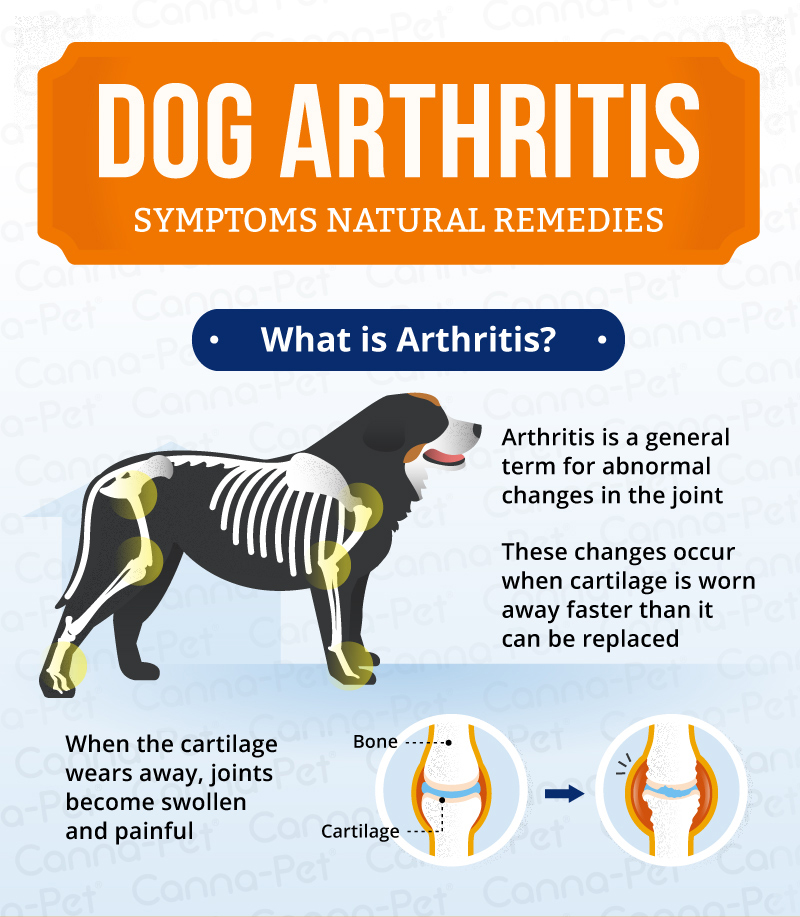
One of the key aspects of managing canine arthritis is effectively managing the pain associated with the condition. There are various pain management options available for dogs with arthritis.
One common approach is the use of nonsteroidal anti-inflammatory drugs (NSAIDs). These medications help reduce inflammation and provide relief from pain. However, they should only be used under the guidance of a veterinarian, as long-term use can have potential side effects.
Another option is the use of disease-modifying osteoarthritis drugs (DMOADs). These medications aim to slow down the progression of arthritis by protecting and supporting joint health.
In addition to medication, other pain management options include physical therapy, acupuncture, and laser therapy. These holistic approaches can help alleviate pain and improve mobility in dogs with arthritis.
It's important to work closely with your veterinarian to determine the most suitable pain management options for your canine companion. Regular monitoring and adjustments may be necessary to ensure optimal pain relief and overall well-being for your furry friend.
Exercise and weight management

Exercise and weight management are crucial components of managing canine arthritis. Regular exercise helps maintain joint flexibility and strengthens the surrounding muscles, reducing stress on the affected joints. However, it is important to strike a balance between exercise and rest to prevent overexertion. Low-impact activities like walking, swimming, and gentle play can help improve mobility without causing further damage to the joints.
Additionally, maintaining a healthy weight is vital for dogs with arthritis as excess weight puts additional strain on the joints, worsening their condition. A well-balanced diet, portion control, and regular monitoring of body weight can help prevent obesity and reduce the burden on arthritic joints. Consulting with a veterinarian or a veterinary nutritionist can provide guidance on appropriate exercise routines and dietary adjustments to promote overall joint health in dogs with arthritis.
Medications for Canine Arthritis
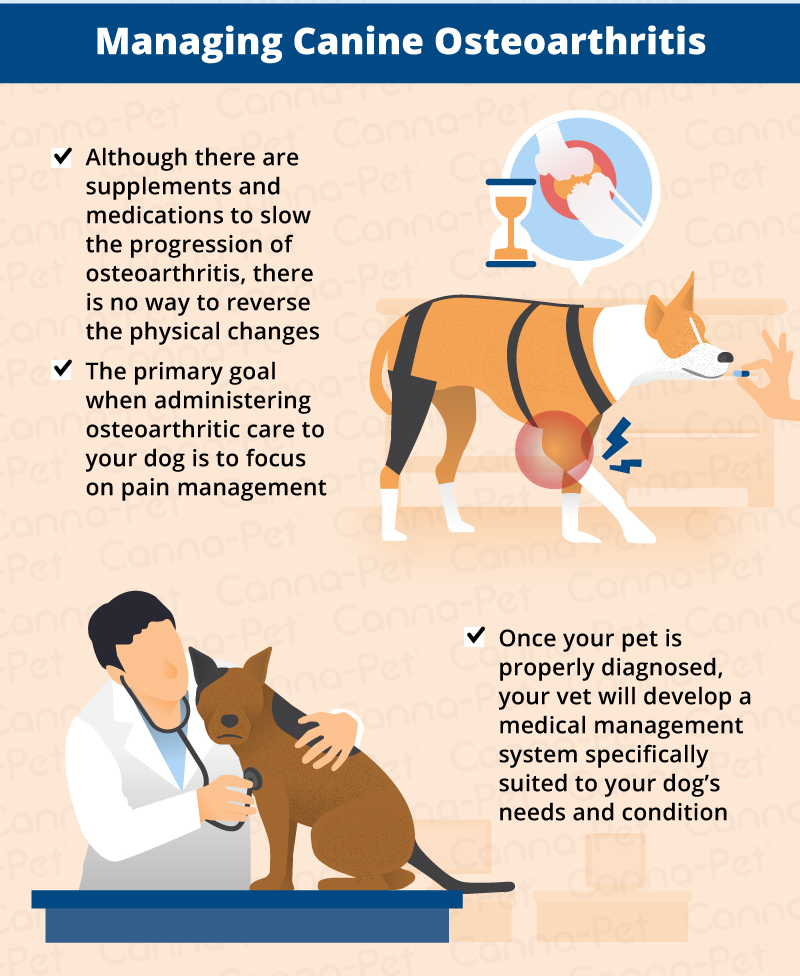
When it comes to managing canine arthritis, medications play a crucial role in providing pain relief and reducing inflammation. There are several types of medications that veterinarians may prescribe to help alleviate the symptoms of arthritis in dogs.
One common type of medication is nonsteroidal anti-inflammatory drugs (NSAIDs). These drugs work by reducing pain and inflammation in the joints, allowing dogs to move more comfortably. However, it is important to note that NSAIDs should only be used under the guidance of a veterinarian, as they can have side effects in some cases.
Another category of medications called disease-modifying osteoarthritis drugs (DMOADs) aims to slow down the progression of arthritis by protecting the cartilage and joint tissues. These drugs can help improve joint function and reduce the need for other pain medications over time.
It is essential for dog owners to follow their veterinarian's instructions when administering medications and monitor their pets closely for any adverse reactions. Regular check-ups with the veterinarian are also necessary to evaluate the effectiveness of the prescribed medication and make any necessary adjustments.
By working closely with a veterinarian, dog owners can ensure that their furry companions receive appropriate medication to manage their arthritis symptoms effectively.
Nonsteroidal anti-inflammatory drugs (NSAIDs)

Nonsteroidal anti-inflammatory drugs (NSAIDs) are commonly used in the management of canine arthritis. These medications work by reducing inflammation, alleviating pain, and improving joint function. NSAIDs can help provide relief for dogs experiencing joint stiffness, swelling, and discomfort associated with arthritis.
There are several different types of NSAIDs available for dogs, including carprofen, meloxicam, and deracoxib. These medications are typically administered orally and require a prescription from a veterinarian.
It is important to note that NSAIDs should only be given under the guidance of a veterinary professional. They can have potential side effects, such as gastrointestinal upset or kidney damage if not used properly. Regular monitoring of the dog's liver and kidneys may be recommended while on these medications.
Overall, NSAIDs can be an effective treatment option to manage canine arthritis and improve a dog's quality of life. However, proper dosing and regular monitoring are essential to ensure the safety and wellbeing of the dog.
Disease-modifying osteoarthritis drugs (DMOADs)
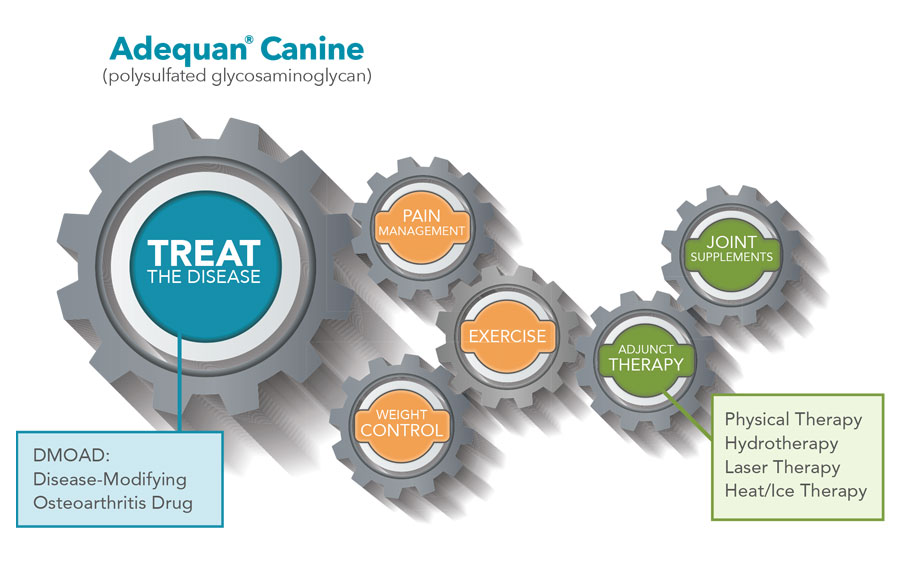
Disease-modifying osteoarthritis drugs (DMOADs) are a class of medications specifically designed to slow the progression of canine arthritis and protect joint health. These drugs work by targeting the underlying causes of joint damage and inflammation. DMOADs can help reduce pain, improve mobility, and maintain joint function in dogs with arthritis.
One commonly prescribed DMOAD is polysulfated glycosaminoglycan (PSGAG), which has shown to promote cartilage repair and reduce inflammation in joints. Another DMOAD known as pentosan polysulfate sodium (PPS) has been found to stimulate the production of natural joint lubricants and enhance joint health.
It is essential to consult with a veterinarian before considering DMOADs for your dog, as they require proper monitoring and potential side effects. Your veterinarian will recommend the appropriate DMOAD based on your dog's specific condition and needs.
Alternative Therapies for Canine Arthritis

Alternative therapies can be a beneficial addition to the management approach for canine arthritis. One popular alternative therapy is acupuncture, which involves the insertion of thin needles into specific points on the dog's body to stimulate energy flow and promote pain relief. Acupressure is a similar technique that applies pressure instead of needles.
Physical therapy is another alternative therapy that can help improve mobility and reduce joint stiffness in dogs with arthritis. This may include exercises to strengthen muscles around the affected joints, as well as techniques like massage and range-of-motion exercises.
Hydrotherapy, which involves exercising in water, can also be beneficial for dogs with arthritis. The buoyancy of the water reduces stress on the joints while still allowing for exercise.
While alternative therapies may not provide a cure for canine arthritis, they can complement traditional treatments and improve the overall quality of life for dogs suffering from this condition. It's important to consult with a veterinarian or a certified practitioner before incorporating any alternative therapies into a dog's arthritis management plan.
Acupuncture and acupressure

Acupuncture and acupressure are alternative therapies that can be beneficial for managing canine arthritis. Acupuncture involves the insertion of tiny needles into specific points on the dog's body, stimulating nerves and muscles to promote pain relief and improve mobility. This ancient Chinese practice is believed to release natural painkillers and anti-inflammatory substances in the body. On the other hand, acupressure involves applying pressure to specific points without the use of needles. It works by stimulating energy flow and promoting balance within the body. Both acupuncture and acupressure can help reduce pain, increase circulation, relax muscles, and improve overall well-being in dogs with arthritis. However, it is important to consult with a certified veterinary acupuncturist or acupressure practitioner to ensure safe and effective treatment for your furry friend.
Physical therapy and hydrotherapy

Physical therapy and hydrotherapy are two effective approaches for managing canine arthritis. Physical therapy involves various exercises and movements that aim to improve joint mobility, strengthen muscles, and reduce pain. This can include activities such as stretching, gentle massages, and controlled movements.
Hydrotherapy, on the other hand, utilizes water to provide a low-impact workout for dogs with arthritis. The buoyancy of the water reduces stress on the joints while allowing for increased range of motion. This type of therapy can be conducted in a pool or underwater treadmill.
Both physical therapy and hydrotherapy help to alleviate stiffness and promote better joint function in dogs with arthritis. They can also help with weight management by providing a safe environment for exercise. Consulting with a veterinarian or a specialized therapist can help determine the best approach for each individual dog's needs.
Lifestyle Modifications for Canine Arthritis

When it comes to managing canine arthritis, making certain lifestyle modifications can greatly improve the comfort and mobility of your furry friend. One important step is providing them with an orthopedic bed. These beds are designed to relieve pressure on the joints, providing a supportive and comfortable surface for your dog to rest on. Additionally, using ramps instead of stairs can help reduce strain on their joints, making it easier for them to access elevated areas such as couches or cars.
Another helpful modification is the use of assistive devices. These devices, such as wheelchairs or braces, can provide support and stability to dogs with limited mobility. They allow your dog to continue enjoying walks and playtime without putting excessive stress on their arthritic joints.
By implementing these lifestyle modifications, you can significantly improve your dog's quality of life and provide them with the comfort they deserve despite their arthritis.
Orthopedic beds and ramps

Orthopedic beds and ramps are essential tools for managing canine arthritis and promoting comfort for dogs with joint pain. Orthopedic beds are specifically designed with supportive materials that relieve pressure on the joints and provide optimal cushioning. These beds help to alleviate discomfort and improve sleep quality for arthritic dogs. Additionally, ramps are beneficial for dogs who may struggle with climbing stairs or getting in and out of cars. They provide a gradual incline, reducing the impact on the joints and making it easier for dogs to navigate elevated surfaces. By using orthopedic beds and ramps, pet owners can enhance their dog's mobility and reduce further strain on their joints, promoting an overall improved quality of life.
Assistive devices for mobility

Assistive devices for mobility play a crucial role in improving the quality of life for dogs with arthritis. These devices are designed to support and assist dogs in their movements, reducing pain and strain on their joints. One commonly used assistive device is a dog wheelchair or cart, which provides support to the hind legs and allows the dog to continue moving around independently. This is particularly helpful for dogs with severe arthritis or those experiencing paralysis. Another useful device is a harness or sling that can be attached to the dog's body to provide additional support while walking or climbing stairs. For smaller dogs, ramps and stairs with anti-slip surfaces can be used to ease joint stress when getting on and off elevated surfaces. These assistive devices ensure that dogs with arthritis can maintain their mobility and enjoy an active lifestyle despite their condition.
Nutritional Supplements for Canine Arthritis
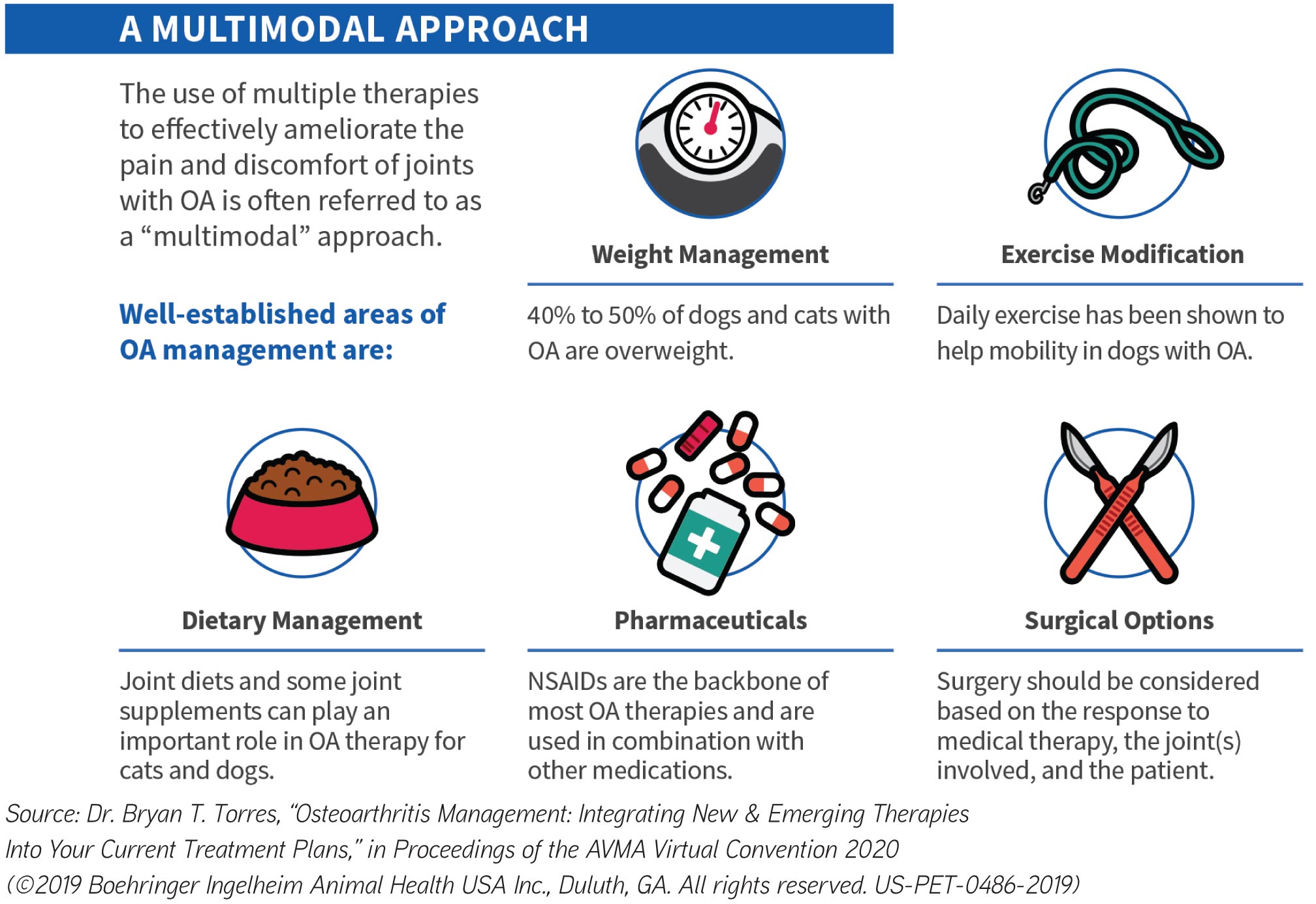
In addition to medication and alternative therapies, nutritional supplements can play a beneficial role in managing canine arthritis. Two commonly used supplements for arthritis in dogs are glucosamine and chondroitin. Glucosamine helps to promote cartilage health and reduce inflammation in the joints, while chondroitin helps to protect the cartilage from further damage. These supplements work together to improve joint mobility and decrease pain associated with arthritis.
Another important supplement that can benefit dogs with arthritis is omega-3 fatty acids. These fatty acids have anti-inflammatory properties, which can help reduce joint pain and swelling. They also support overall joint health and improve mobility in dogs with arthritis.
It's important to note that while these nutritional supplements can be helpful in managing canine arthritis, they should be used under the guidance of a veterinarian. The dosage and frequency of these supplements may vary depending on the individual dog's needs.
Glucosamine and chondroitin

Glucosamine and chondroitin are two commonly used supplements for managing canine arthritis. Glucosamine is a natural compound found in the body's cartilage, while chondroitin is a component of connective tissue. These supplements are believed to promote cartilage health and reduce inflammation.
Glucosamine helps to stimulate the production of substances that build and maintain cartilage, making it essential for joint health. Chondroitin, on the other hand, has anti-inflammatory properties and helps to slow down the progression of arthritis.
When used together, glucosamine and chondroitin can help alleviate symptoms such as stiffness, pain, and swelling in arthritic dogs. These supplements are available in various forms such as powder, chewable tablets, and liquid formulations.
It's important to consult with your veterinarian before starting your dog on any new supplement, as they can provide guidance on the appropriate dosage and ensure that it is safe for your dog's specific needs.
Omega-3 fatty acids

Omega-3 fatty acids are essential nutrients that play a crucial role in managing canine arthritis. These fatty acids have anti-inflammatory properties that can help alleviate joint pain and reduce inflammation in arthritic dogs. They are commonly found in fish oil supplements, which can be easily added to a dog's diet.
Studies have shown that omega-3 fatty acids can help improve joint mobility and reduce the need for high doses of anti-inflammatory medications. They also support overall joint health by promoting the production of healthy cartilage and reducing the breakdown of existing cartilage.
When choosing an omega-3 supplement for your arthritic dog, look for one that contains high levels of eicosapentaenoic acid (EPA) and docosahexaenoic acid (DHA). These two types of omega-3 fatty acids are particularly beneficial for managing arthritis symptoms.
Adding omega-3 fatty acids to your dog's dietary regimen can be an effective and safe way to support their joint health and manage the signs of canine arthritis.
Conclusion
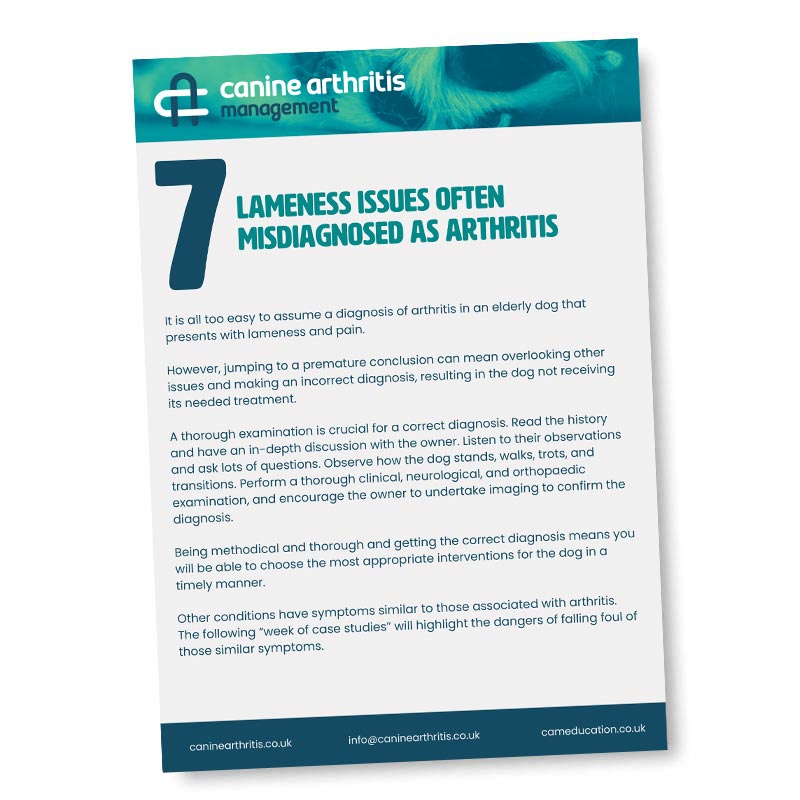
In conclusion, canine arthritis is a common condition that affects many dogs, particularly as they age. It is important for pet owners to be aware of the signs and symptoms of arthritis in order to provide appropriate care and management. Limping, difficulty in walking, joint stiffness, and swelling are some of the common indicators of this condition. A thorough diagnosis involving physical examination, history taking, and diagnostic imaging is necessary to confirm the presence of arthritis. Management approaches for canine arthritis include pain management options, exercise, weight management, and medications such as NSAIDs and DMOADs. Alternative therapies like acupuncture, physical therapy, and hydrotherapy can also be beneficial. Lifestyle modifications such as orthopedic beds and ramps, as well as assistive devices for mobility, can improve the quality of life for arthritic dogs. Additionally, nutritional supplements like glucosamine and chondroitin, along with omega-3 fatty acids, have shown promise in reducing inflammation and promoting joint health. By implementing these strategies and seeking veterinary assistance when needed, pet owners can help alleviate discomfort and improve the well-being of their arthritic dogs.
Tips for preventing canine arthritis

Maintaining a healthy lifestyle for your canine companion can play a significant role in preventing arthritis. First and foremost, ensuring your dog maintains a healthy weight is crucial. Excess weight puts unnecessary stress on their joints, increasing the risk of arthritis. Regular exercise is also important to keep their joints flexible and muscles strong. Just make sure to avoid activities that are too strenuous or put excessive strain on their joints.
Another tip is to provide your dog with a balanced diet that includes essential nutrients for joint health, such as omega-3 fatty acids and glucosamine. These nutrients can help support joint function and reduce inflammation. Additionally, providing your furry friend with comfortable bedding and avoiding slippery surfaces can also help prevent injuries that could lead to arthritis later in life.
Lastly, regular check-ups with the veterinarian are essential to catch any signs of potential joint issues early on. Ultimately, by implementing these preventive measures, you can significantly reduce the risk of canine arthritis and ensure a healthier, more active life for your dog.
When to seek veterinary assistance

When it comes to managing canine arthritis, it's important to know when to seek veterinary assistance. While some signs of arthritis may be mild and manageable at home, there are certain circumstances where professional help is necessary.
If your dog's symptoms suddenly worsen or if they have trouble performing normal daily activities such as climbing stairs or jumping onto furniture, it may be time to consult a veterinarian. Additionally, if your dog displays signs of significant pain, such as whimpering or yelping, or if they experience a loss of appetite or weight loss, these could also indicate the need for veterinary intervention.
Remember, early detection and treatment are crucial for effectively managing canine arthritis. Your veterinarian will be able to provide a comprehensive evaluation and recommend appropriate strategies to alleviate your dog's discomfort and improve their quality of life. Don't hesitate to reach out for professional assistance when you notice concerning changes in your dog's condition.




0 Comments